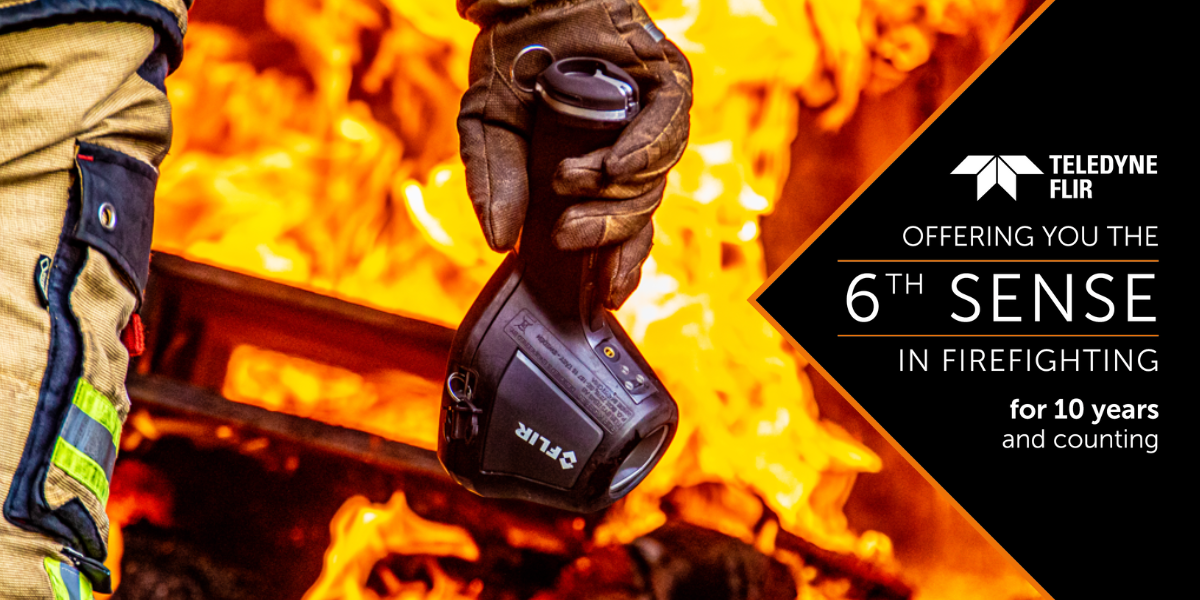Teledyne FLIR supports frontline responders in fighting Australian bush fires

Bush fires have become a common phenomenon during Australia’s summer season. Usually, these fires destroy many acres of valuable land and they have a devastating impact on wildlife. Firefighters often risk their lives to stop fires from spreading. Luckily, these disasters also lead to worldwide acts of solidarity and support. As a provider of lifesaving technologies for first responders, Teledyne FLIR recently donated 100 FLIR K1 situational awareness thermal cameras to volunteer fire departments in need of the technology.
Bush fires in Australia are a widespread and regular phenomenon that have contributed significantly to shaping the nature of the continent. Especially eastern Australia is one of the most fire-prone regions of the world. Since 1851, bush fires have killed nearly 800 people in Australia and billions of animals.
The most destructive fires are usually preceded by extreme high temperatures, low relative humidity and strong winds, which combine to create ideal conditions for the rapid spread of fire. The most recent occurrence of this phenomenon was the 2019 – 2020 bush fires, from July through March. What locals now call ‘black summer’ led to the deaths of at least 33 people and over 3 billion animals. In addition, more than 11 million hectares (110,000 sq. km or 27.2 million acres) of bush, forest and parks across Australia have been burned. Although Australia has always had bush fires, the 2019 – 2020 season was worse than usual.
Firefighters’ response
Bush fires typically ask for massive deployments of local and national fire departments to get the spreading under control. Unfortunately, not all fire teams are fully equipped for this job. When the local volunteer fire departments were discharged to combat the fires of 2019 and 2020, it became apparent they were under-equipped with firefighting technology. To answer their most pressing needs, Teledyne FLIR immediately began the mission to seed 100 FLIR K1 situational awareness thermal camera donations to volunteer fire departments in need of the technology. Roughly 80 volunteer departments throughout Australia benefited from the FLIR K1 cameras.
“When we learned about the lack of thermal technology in the responding volunteer departments, FLIR felt it was our obligation to support the frontline responders with equipment to better complete their mission safely and effectively,” said Steve Blott, Sales Manager at FLIR Australia. “The benefits of FLIR technology allow firefighters to search faster and be more efficient, keeping the community safe and making sure the crews return home.”
Technology for first responders
FLIR Thermal Imaging Cameras (TICs) are proven lifesavers for fire crews during fire attack and overhaul. Not only can they help firefighters find their way through thick smoke in unfamiliar surroundings, TICs can also help crews determine the center of fire activity, locate victims and other firefighters, and spot potential hazards not seen by the naked eye. Crucially, because TICs show minute differences in heat energy, they’re vital for search and rescue, Hazardous Materials Operations (HAZMAT Ops), and many other operational specialties beyond the standard fire ground.
The FLIR K1 is a rugged, compact thermal camera that serves as an extra set of eyes on the fire scene, allowing commanders, officers, and inspectors to quickly complete a thorough 360° assessment in total darkness and through smoke. With a bright, integrated flashlight, the FLIR K1 illuminates the scene to help the user steer and manage the crew more effectively. It also displays 160 × 120 pixel thermal images that help users gain additional situation awareness that is not possible with the naked eye.

FLIR K1 Situational Awareness Camera
Looking into the future
Scientists have long warned that a hotter, drier climate will contribute to fires becoming more frequent and more intense. Many parts of Australia have been in drought conditions, some for years, which has made it easier for the fires to spread and grow. Humans are sometimes to blame for starting the fires, but they are also often sparked by natural causes, such as lightning striking dry vegetation. Once fires have started, other areas are at risk, with embers blown by the wind causing blazes to spread to new areas.
With such an ever-present risk and with such far-reaching consequences, it will be crucial for Australia’s fire & rescue teams to leverage the latest advances in fire detection technology. Fortunately, with thermal imaging cameras like Teledyne FLIR’s K-Series, this technology has become so affordable, that is has become more accessible for a wider audience of firefighting teams. By offering a clearer view in the darkest, smokiest environments, more firefighters will be able to maneuver more strategically, stay better oriented, and find victims faster.


